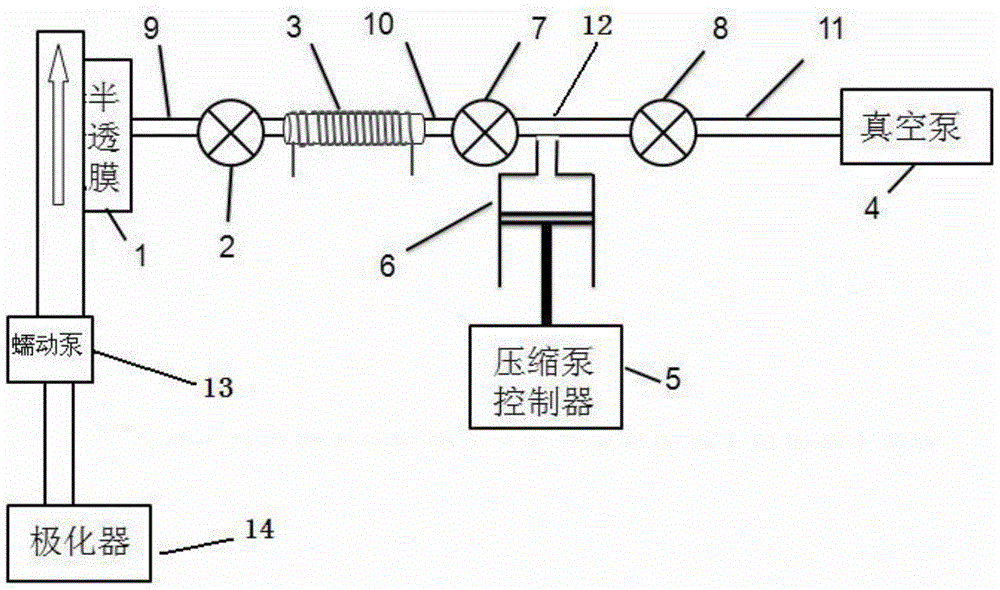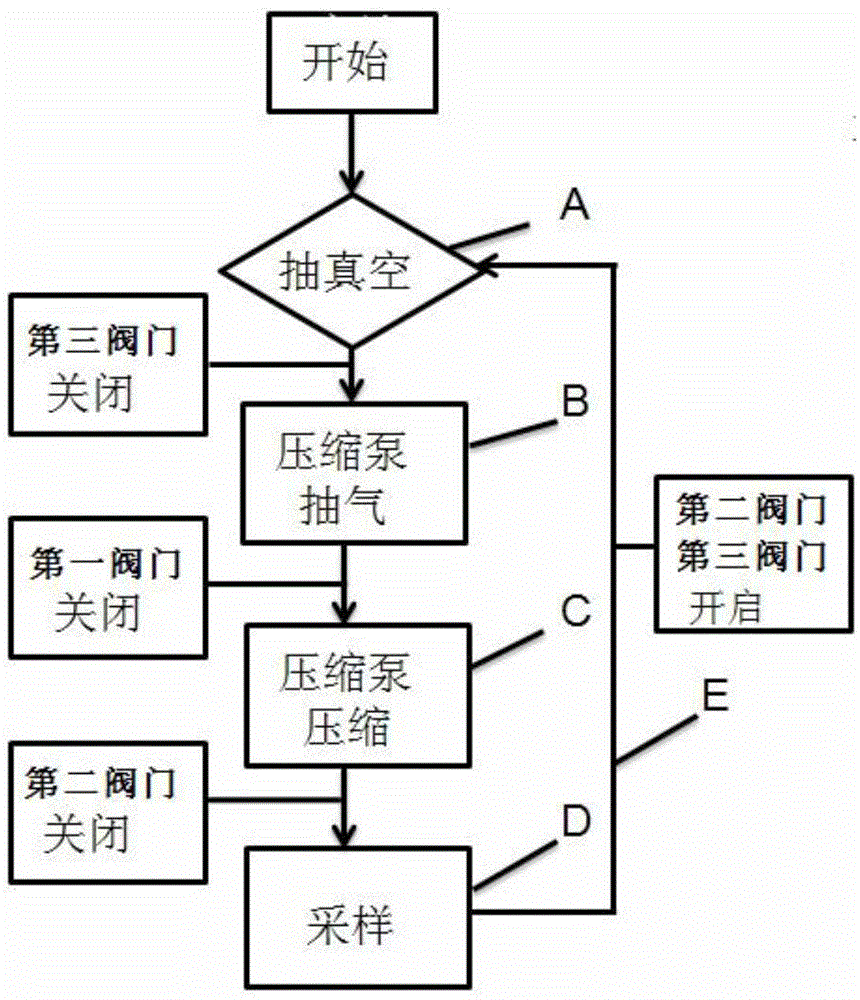A magnetic resonance engine device and method
A magnetic resonance and engine technology, applied in the directions of magnetic resonance measurement, magnetic variable adjustment, control/regulation system, etc., can solve the problem of high signal strength, loss of polarization degree of hyperpolarized inert gas, and density of hyperpolarized inert gas signal itself Low-level problems, to achieve the effect of enhancing the magnetic resonance signal and increasing the sample density
- Summary
- Abstract
- Description
- Claims
- Application Information
AI Technical Summary
Problems solved by technology
Method used
Image
Examples
Embodiment 1
[0028] Such as figure 1 As shown, a magnetic resonance engine device includes a first valve 2, a second valve 7, a third valve 8, a vacuum pump 4, a compression pump 6 and a compression pump controller 5, one end of the first valve 2 and one end of the first pipeline 9 The other end of the first pipeline 9 is provided with a semi-permeable membrane 1, the first valve 2 and the second valve 7 are connected through the second pipeline 10, the second pipeline 10 is provided with a detection coil 3, the outlet of the compression pump 6, the first The second valve 7 and the third valve 8 are respectively connected to the three channels of the tee 12 , and the third valve 8 is connected to the vacuum pump 4 through a third pipeline 11 .
[0029] A magnetic resonance engine device further includes a polarizer 14 and a peristaltic pump 13, the polarizer 14 is connected to the peristaltic pump 13, and the peristaltic pump 13 is connected to the first pipeline 9 through the semipermeabl...
Embodiment 2
[0033] Hyperpolarized noble gases are 129 Xe,
[0034] After the experiment started, at first the first valve 2, the second valve 7, and the third valve 8 were all kept open, and the vacuum pump 4 was started to suck all the air in the pipeline of the whole system to keep the vacuum degree lower than 4psi. If the air is drawn outside the system, the system will be in and maintain a negative pressure state. At this time, the piston of the compression pump 6 will be in its own state close to the three-way 12. When the system is in a vacuum state, close the third valve 8 to isolate the pipeline system from the vacuum system. Since the semi-permeable membrane 1 is a one-way chemical membrane, it can only allow 129 Xe gas molecules permeate, and when there is a pressure difference between the two ends of the semi-permeable membrane 1, when the dissolved hyperpolarized 129 Hyperpolarization in a solution of Xe 129 The Xe gas will pass through the semi-permeable membrane 1 and ent...
Embodiment 3
[0037] A magnetic resonance engine method, comprising the steps of:
[0038] Step 1 (A), open the first valve 2, the second valve 7 and the third valve 8, start the vacuum pump 4, until the vacuum degree in each pipeline and valve in the device is lower than 4psi, the piston of the compression pump 6 is driven by negative pressure. Suction to the process closest to the tee 12;
[0039] Step 2 (B), close the third valve 8, the hyperpolarized inert gas enters the first pipeline 9 through the semi-permeable membrane 1, the compression pump controller 5 controls the piston of the compression pump 6 to move away from the tee 12, and the hyperpolarized inert gas The polarized inert gas fills the volume space of the compression pump 6;
[0040] Step 3 (C), close the first valve 2, the compression pump controller 5 controls the piston of the compression pump 6 to compress in the direction close to the tee 12, and press the hyperpolarized inert gas into the first valve 2 and the second ...
PUM
 Login to View More
Login to View More Abstract
Description
Claims
Application Information
 Login to View More
Login to View More - Generate Ideas
- Intellectual Property
- Life Sciences
- Materials
- Tech Scout
- Unparalleled Data Quality
- Higher Quality Content
- 60% Fewer Hallucinations
Browse by: Latest US Patents, China's latest patents, Technical Efficacy Thesaurus, Application Domain, Technology Topic, Popular Technical Reports.
© 2025 PatSnap. All rights reserved.Legal|Privacy policy|Modern Slavery Act Transparency Statement|Sitemap|About US| Contact US: help@patsnap.com


